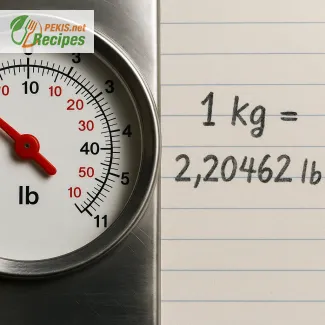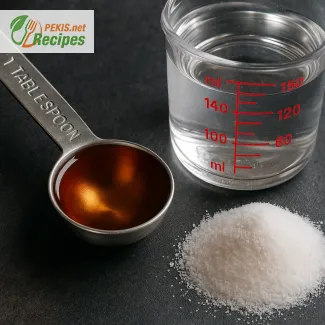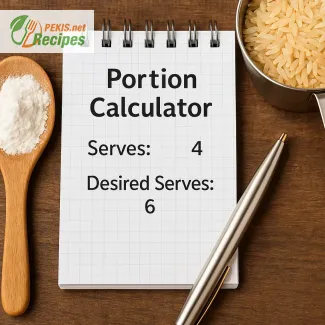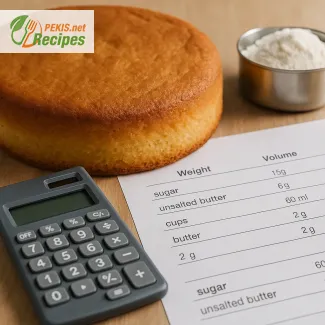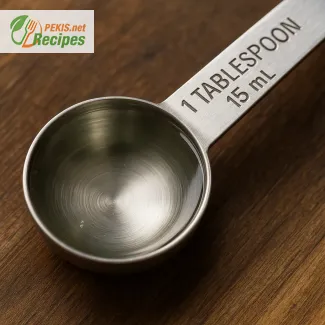
How Many Milliliters Are in a Tablespoon? Your Practical Guide
Mastering liquid measurements: from tbsp to ml without confusion
When you're following a recipe and stumble upon “1 tbsp”, it might seem simple—until you realize your measuring spoons are in milliliters. This situation is more common than you think, especially for home cooks who toggle between American and European recipe sources. Understanding how to convert tablespoons (tbsp) to milliliters (ml) accurately is essential for maintaining flavor balance, ensuring proper consistency, and, frankly, avoiding culinary disasters.
This guide is crafted for home bakers, amateur chefs, and recipe developers who need a reliable way to convert 1 tablespoon into milliliters, quickly and accurately—without relying on inconsistent online calculators or vague estimates.
Why converting 1 tbsp to ml matters in real cooking
In the kitchen, precision matters. A tablespoon too much oil in a salad dressing can throw off the taste. A tablespoon too little water in dough can change the texture. And if you're working with strong ingredients like vinegar or lemon juice, the difference between 15 ml and 18 ml might completely alter the dish.
In most US-based recipes, one tablespoon equals approximately 14.79 ml. However, in UK or metric-based recipes, 1 tbsp is often rounded to 15 ml. It’s a small difference, but in recipes requiring several tablespoons, the milliliters add up.
So, if you're converting:
- 1 US tablespoon = 14.79 ml
- 1 metric tablespoon (used in UK, AU, CA) = 15 ml
Being aware of which system the recipe follows helps avoid errors—especially in delicate preparations like sauces, glazes, and syrups.
A closer look at the tablespoon in different regions
US customary tablespoon
The US tablespoon is widely used in North America and equals 14.79 ml. It’s a part of the US customary system, which includes cups, teaspoons, quarts, and gallons. Most US kitchen tools are calibrated to this size, and nearly all American cookbooks and websites follow it.
Metric tablespoon
In many parts of Europe, Australia, New Zealand, and Canada, a metric tablespoon is standardized at 15 ml. This is often the default in packaging instructions, nutrition labels, and international cookbooks. For instance, a British recipe asking for "2 tbsp of olive oil" expects 30 ml, not 29.58 ml, as per US standards.
Australian exception
Australia is the only country where a tablespoon equals 20 ml, which can cause major confusion if overlooked. So if you're cooking from an Australian source, double-check that you're converting correctly—or you may use one-third too much.
How to convert 1 tbsp to ml manually
If you're working off a recipe and need to make a quick manual conversion:
- 1 US tablespoon ≈ 14.79 ml
- 1 metric tablespoon = 15 ml
This means that in practical use:
- You can round 1 tbsp to 15 ml for most recipes unless you're dealing with pharmaceuticals or extremely sensitive ingredients.
- Use measuring spoons marked in ml when available—many come with 5 ml, 15 ml, and 30 ml increments.
Should you always be this precise?
When to round up or down
In home cooking, being off by 0.21 ml is negligible. But in baking, where exact hydration levels influence texture and rise, you may want to stick to precise values. Similarly, with potent liquids like chili oil or food dyes, even a tiny variation can have an outsized effect.
When eyeballing is acceptable
When making vinaigrettes, stir-frys, or marinades, eyeballing a tablespoon is often fine, especially when taste-testing along the way. However, when following a high-end patisserie recipe, use your digital scale or ml-based spoons to avoid disaster.
How accurate are digital measuring tools?
Modern digital kitchen scales often come with a ml mode, which measures liquids based on density assumptions—usually assuming water's density (1 g = 1 ml). While this works for water-based liquids, it gets less accurate for oil, honey, or syrup, which are denser or lighter.
So, if you're converting 1 tbsp of:
- Olive oil → ~13.5 g (but 1 tbsp still = ~14.79 ml)
- Honey → ~21 g per tablespoon, so volume is consistent, but weight isn’t.
When converting volume to weight, check ingredient-specific conversion tables.
Real-life cooking scenarios where this matters
- Making a cocktail: Your recipe calls for 1 tbsp of lemon juice. You only have a ml shot glass. Use 15 ml and you're fine.
- Baking a sponge cake: Requires 3 tbsp of milk. That’s 45 ml in total—if you mistakenly use 20 ml per tbsp (Australian measure), you’ll add 60 ml, which may affect the batter’s stability.
- Meal-prepping salad dressings for the week: using the wrong conversion could lead to overly oily or acidic results across multiple servings.
Common ingredients measured in tablespoons
Some ingredients frequently measured in tbsp and their ml equivalents:
- Soy sauce: 1 tbsp = 15 ml
- Olive oil: 1 tbsp = 15 ml
- Vinegar: 1 tbsp = 15 ml
- Sugar: 1 tbsp = 15 ml
- Lemon juice: 1 tbsp = 15 ml
These round values work well for metric tablespoons, simplifying your kitchen math.
Getting 1 tablespoon to ml right is not just about numbers—it’s about respecting the recipe, achieving consistent results, and reducing waste. Once you internalize that 1 tbsp ≈ 15 ml, your confidence in switching between recipes from different parts of the world will grow exponentially.
If you often deal with conversions, consider labeling your measuring spoons clearly or using a chart on your fridge. Your cooking will be faster, more precise, and much less frustrating.
